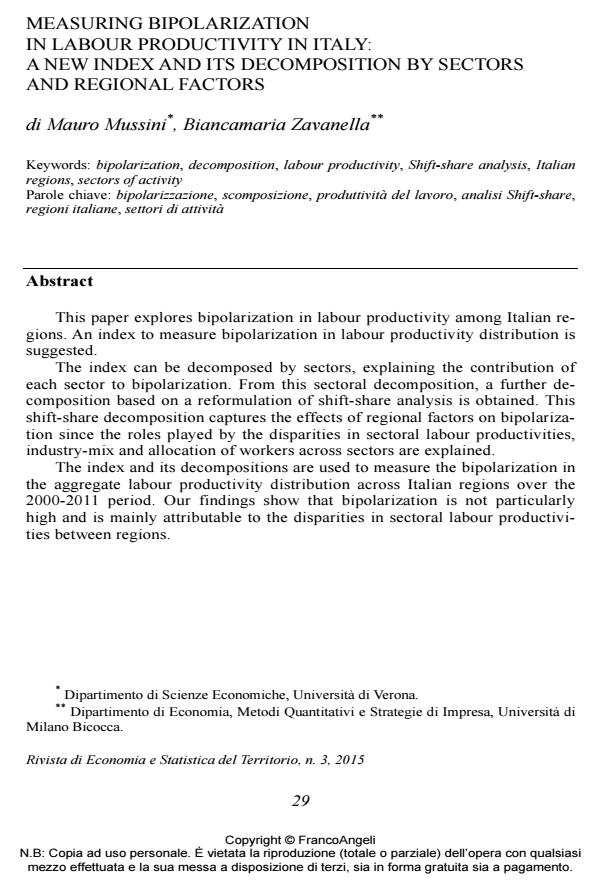Measuring bipolarization in labour productivity in Italy: a new index and its decomposition by sectors and regional factors
Journal title RIVISTA DI ECONOMIA E STATISTICA DEL TERRITORIO
Author/s Mauro Mussini, Biancamaria Zavanella
Publishing Year 2015 Issue 2015/3
Language English Pages 27 P. 29-55 File size 165 KB
DOI 10.3280/REST2015-003002
DOI is like a bar code for intellectual property: to have more infomation
click here
Below, you can see the article first page
If you want to buy this article in PDF format, you can do it, following the instructions to buy download credits

FrancoAngeli is member of Publishers International Linking Association, Inc (PILA), a not-for-profit association which run the CrossRef service enabling links to and from online scholarly content.
This paper explores bipolarization in labour productivity among Italian regions. An index to measure bipolarization in labour productivity distribution is suggested. The index can be decomposed by sectors, explaining the contribution of each sector to bipolarization. From this sectoral decomposition, a further decomposition based on a reformulation of shift-share analysis is obtained. This shift-share decomposition captures the effects of regional factors on bipolarization since the roles played by the disparities in sectoral labour productivities, industry-mix and allocation of workers across sectors are explained. The index and its decompositions are used to measure the bipolarization in the aggregate labour productivity distribution across Italian regions over the 2000-2011 period. Our findings show that bipolarization is not particularly high and is mainly attributable to the disparities in sectoral labour productivities between regions. Keywords: bipolarization, decomposition, labour productivity, Shift-share analysis, Italian regions, sectors of activity
Keywords: Bipolarizzazione, scomposizione, produttività del lavoro, analisi Shift-share, regioni italiane, settori di attività
Jel codes: R10, C49, E24.
Mauro Mussini, Biancamaria Zavanella, Measuring bipolarization in labour productivity in Italy: a new index and its decomposition by sectors and regional factors in "RIVISTA DI ECONOMIA E STATISTICA DEL TERRITORIO" 3/2015, pp 29-55, DOI: 10.3280/REST2015-003002